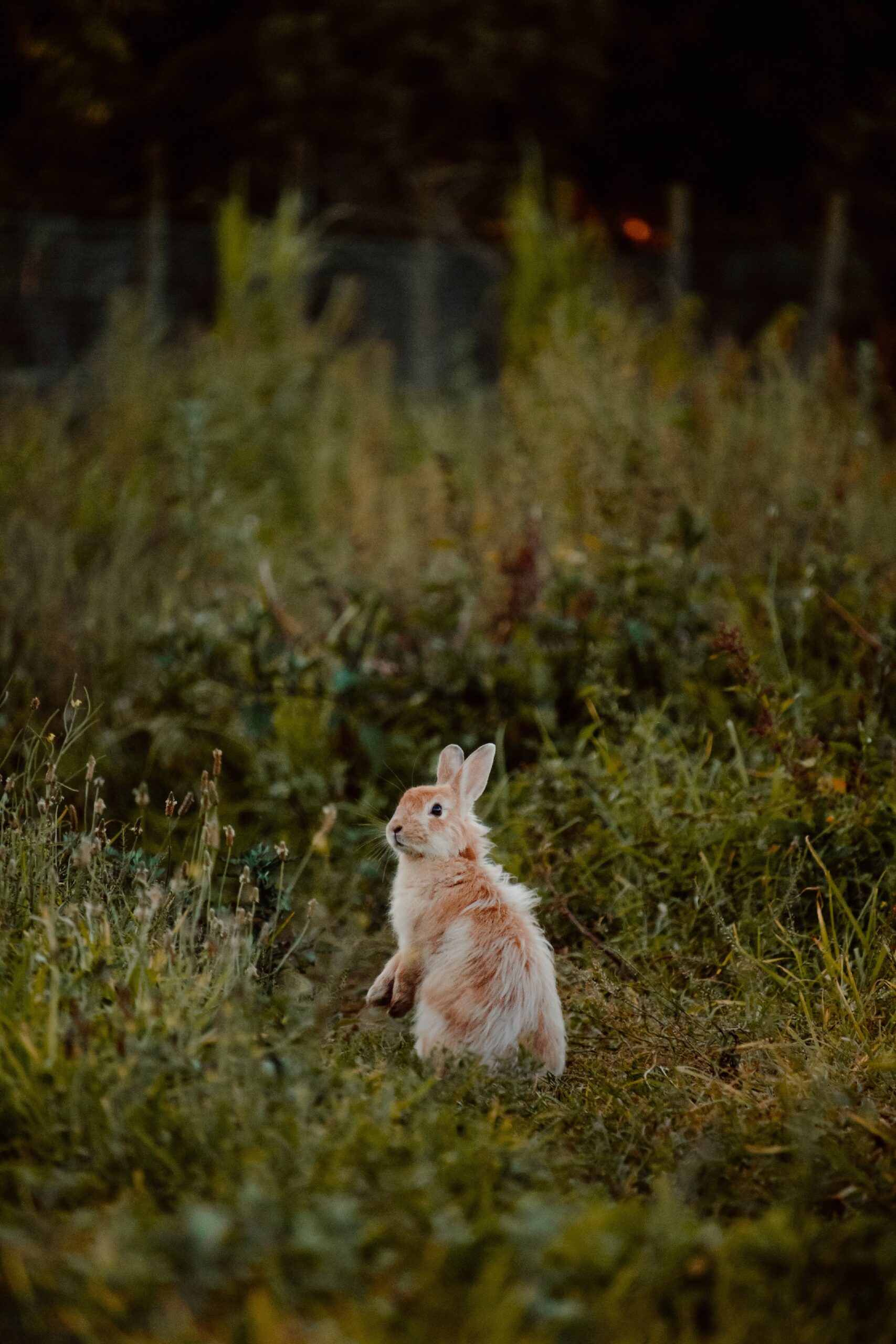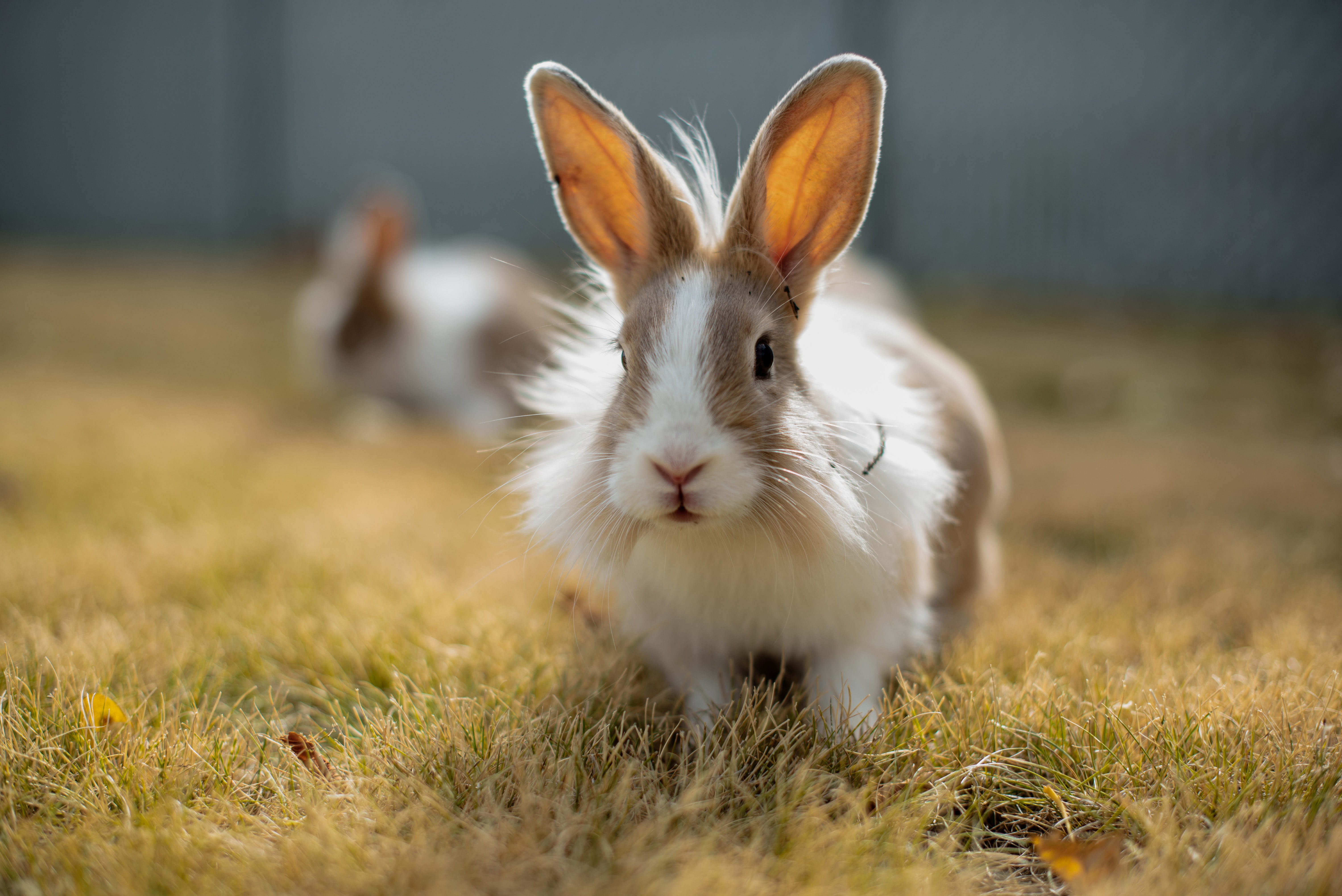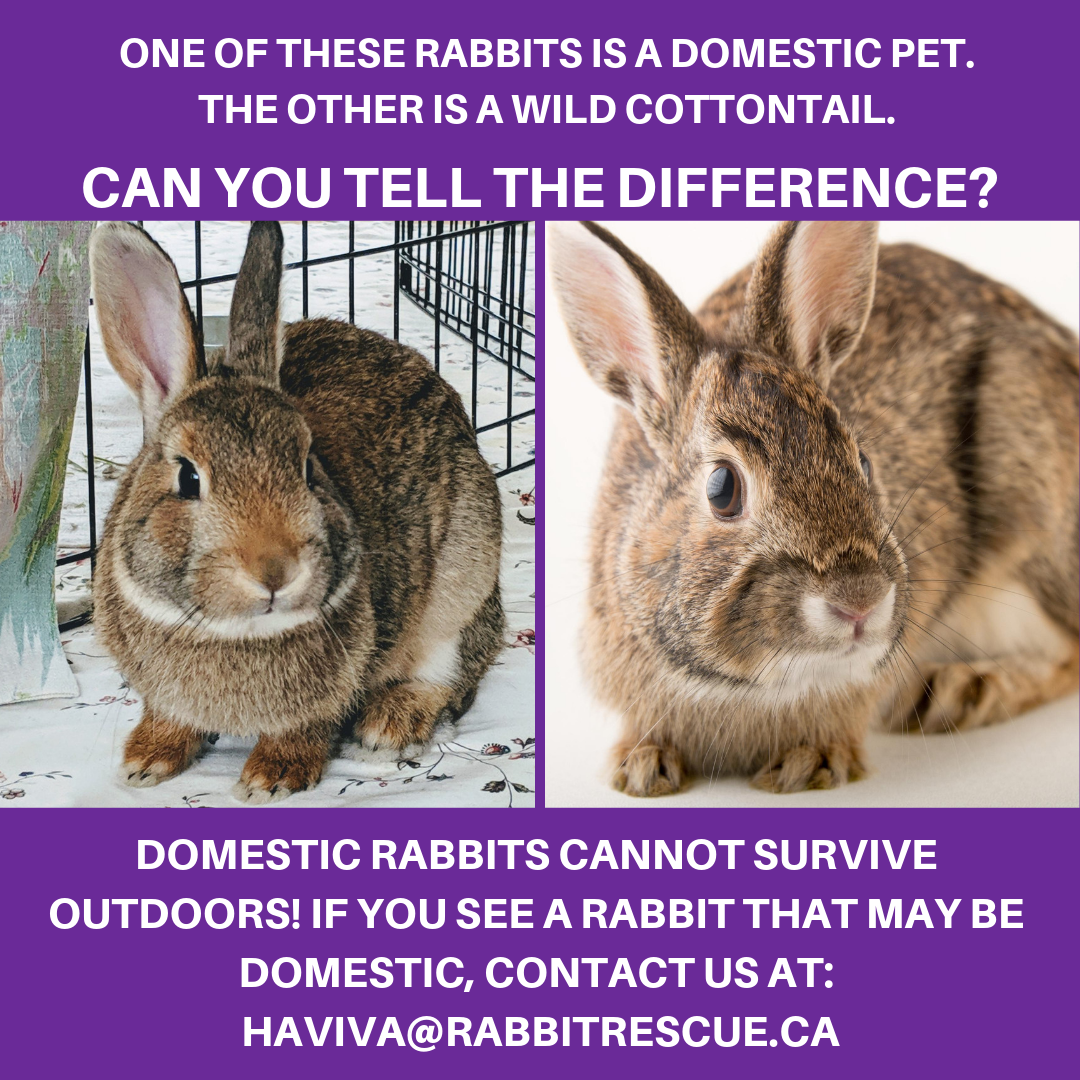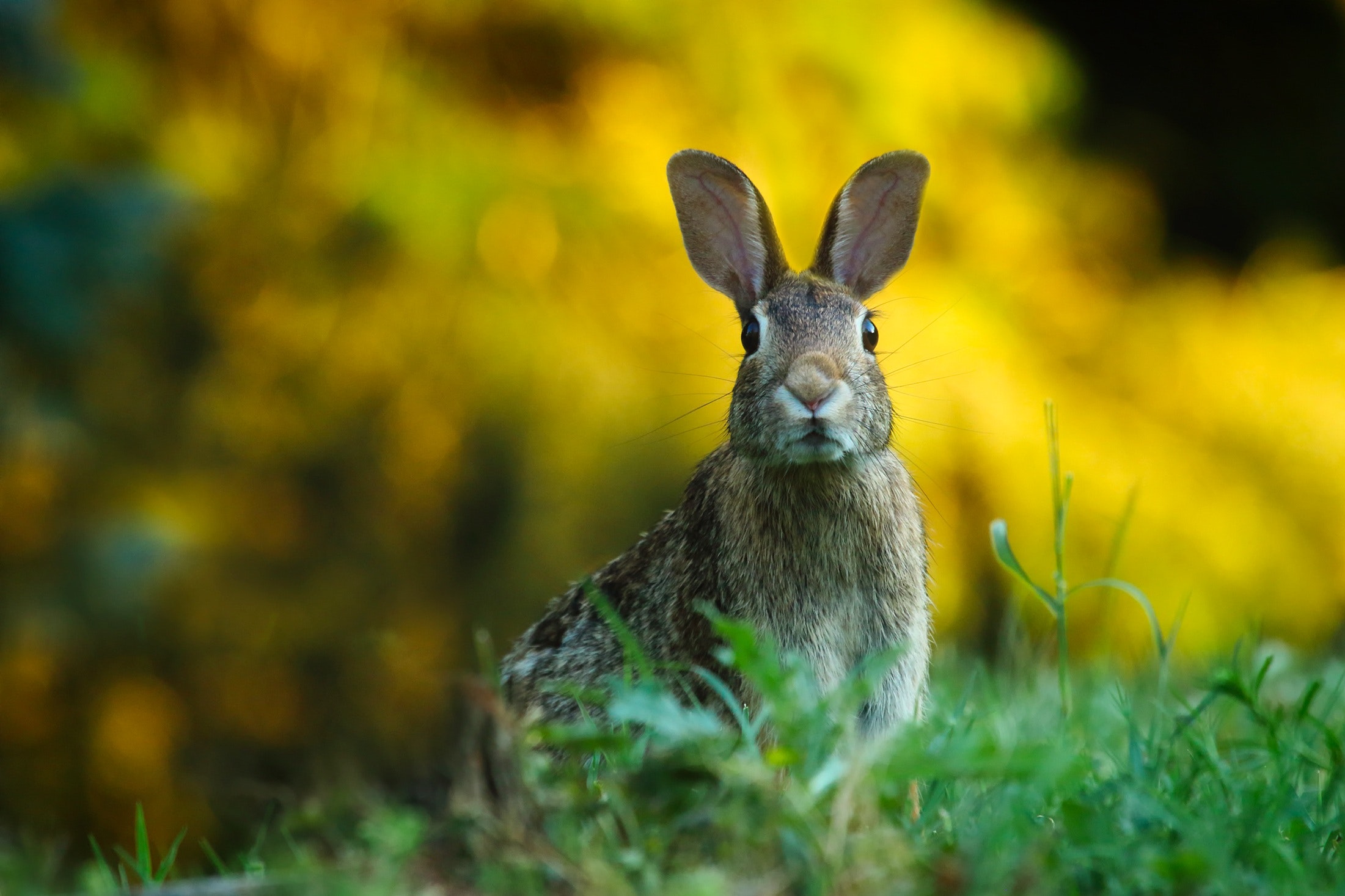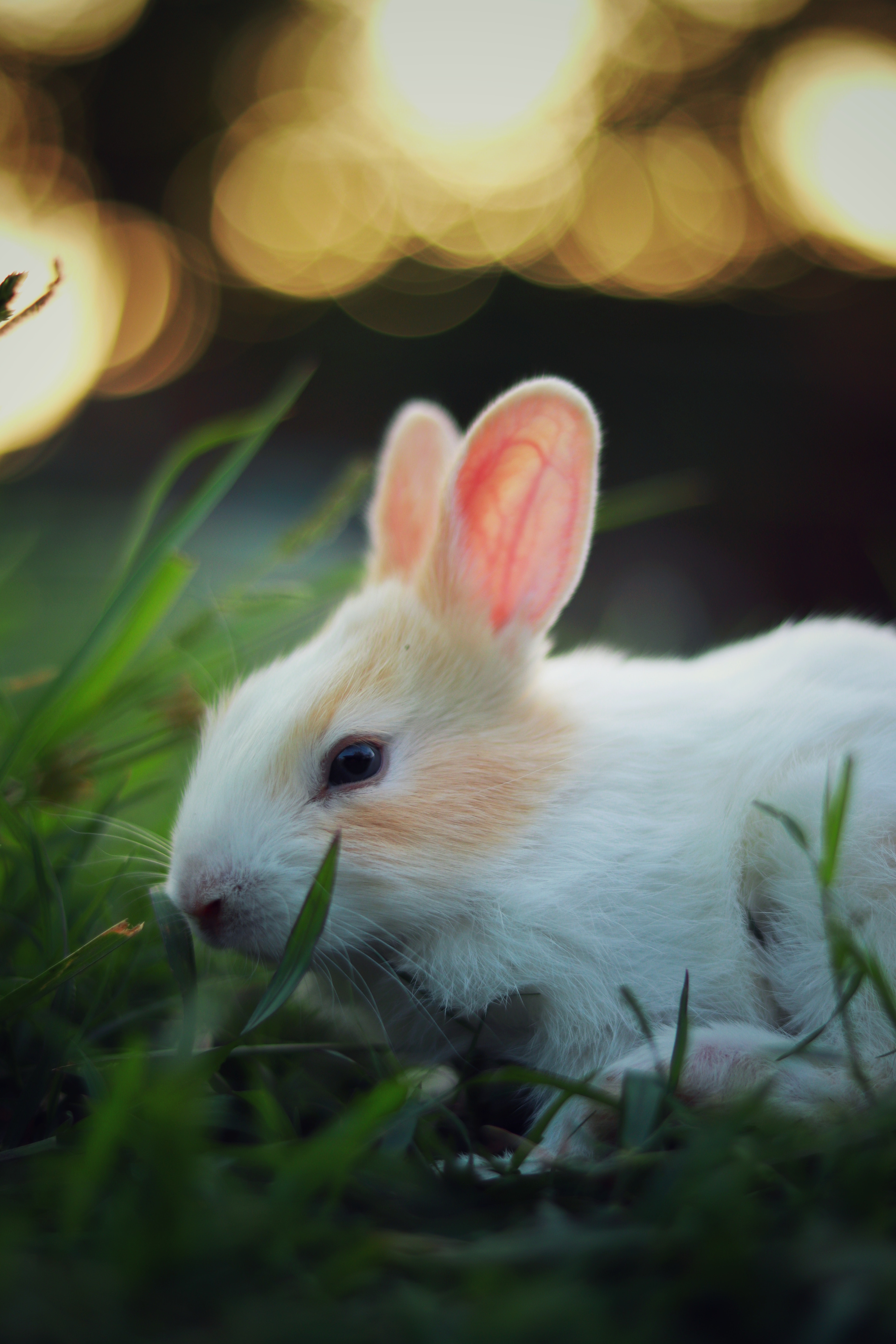Rabbit Help
Domestic Rabbit or Wild Rabbit?
Every year, especially springtime, House Rabbit Resource Network is flooded with messages from people who’ve found a rabbit and don’t know what to do.
Before we tell them the strategies we outline in our Lost and Found Rabbits page, we have to clarify that the animal they’ve found is actually a domestic rabbit and not a wild rabbit.
Many times, people are surprised by our questioning, because to them, a rabbit is a rabbit. Why can’t the rabbit rescue take care of any rabbit? The answer to that is because domestic rabbits are actually an entirely different species from wild rabbits, and so their care is completely different as well.
So, if you’ve found yourself with a rabbit and aren’t entirely sure whether they’re a domestic rabbit or a wild rabbit, you’re in the right place! This page outlines the differences, how to tell the difference, and who to call based on whether you have a domestic rabbit or a wild rabbit on your hands.
Domestic Rabbit or Wild Rabbit?
While domestic “house” rabbits and wild rabbits (the European rabbit specifically) share a common ancestor, the two split off into different species a long time ago.
That’s why domestic and wild rabbits can look similar, but that’s where their similarities end. Domestic and wild rabbit’s personalities, diet, habitats, and behavior are very different. That’s why a domestic “house” rabbit rescue can’t help an injured wild bunny because they’re completely different species with different needs!
A big reason why the public thinks domestic rabbits are the same as wild rabbits is that many times in media, domestic rabbits are shown as wild rabbits. Take the photo on the right for example. This photo is of a domestic lion-head breed rabbit photographed to look like it’s in the wild. It’s a beautiful photo, but it creates a false narrative that a rabbit like this is a wild animal. This makes people believe that rabbits like this can be released into the wild and live happily ever after. This is a deadly misconception.
How to Tell if it's a Domestic Rabbit or a Wild Rabbit
Is that bunny outside a wild cottontail or a neighbor’s lost BFF?
Observe the size, shape, and most notably, the behavior of the rabbit. These will reveal if the rabbit was born free or escaped captivity. Things to look out for include:
Domestic "House" Rabbit
- Domestic rabbits can come in a wide range of fur colors including black, white, grey, brown, orange, red, spots, splotches, brindle, etc.
- Some domesticated rabbits can come in almost the exact same speckled brown coloring as seen in wild rabbits. This is when it’s the most challenging to tell the two species a part.
- Domestic rabbit coats will never change from one color to another based on the season
- Certain domestic rabbit breeds have longer fur coats such as Angoras or Lionhead rabbits.
- Many of the short-haired domestic rabbit breeds are still fluffier and softer looking than a wild rabbit’s fur.
Wild Rabbit
- Wild rabbits like the Eastern cottontail and European hare will always have a “speckled” or “peppered” brown-ish red color.
- More specifically this color is a mix of small specks of brown, white, orange/red, grey, and black throughout most of their body with the purpose of being able to easily blend into an outdoor environment.
- There is a third type of wild rabbit in Canada, the Snowshoe hare which is this brown color in the warm months and its coat turns to white during the cold months to blend in with it’s the environment.
- Wild rabbits will never have floppy ears like the domestic rabbit Lop breeds.
- A wild rabbit’s fur will always be short and sleek throughout its entire body. In cold weather, the Eastern Cottontail can appear to have fluffier fur, but never long, wispy strands like a Lionhead rabbit.
Photo of a domestic Lionhead rabbit. You will never find a wild rabbit with this long fur type or fur color.
- Domestic rabbit breeds usually have fuller cheeks and wide, round eyes.
- However, there are a few domestic breeds like Rexes that can have very narrow and pointy features.
- Domestic rabbits can be either extremely friendly or extremely skittish depending on how much human interaction they have had, and how scared/traumatized they’ve been while outside. But domestic rabbits most likely won’t dart or speed away with extraordinary speed like a wild rabbit can.
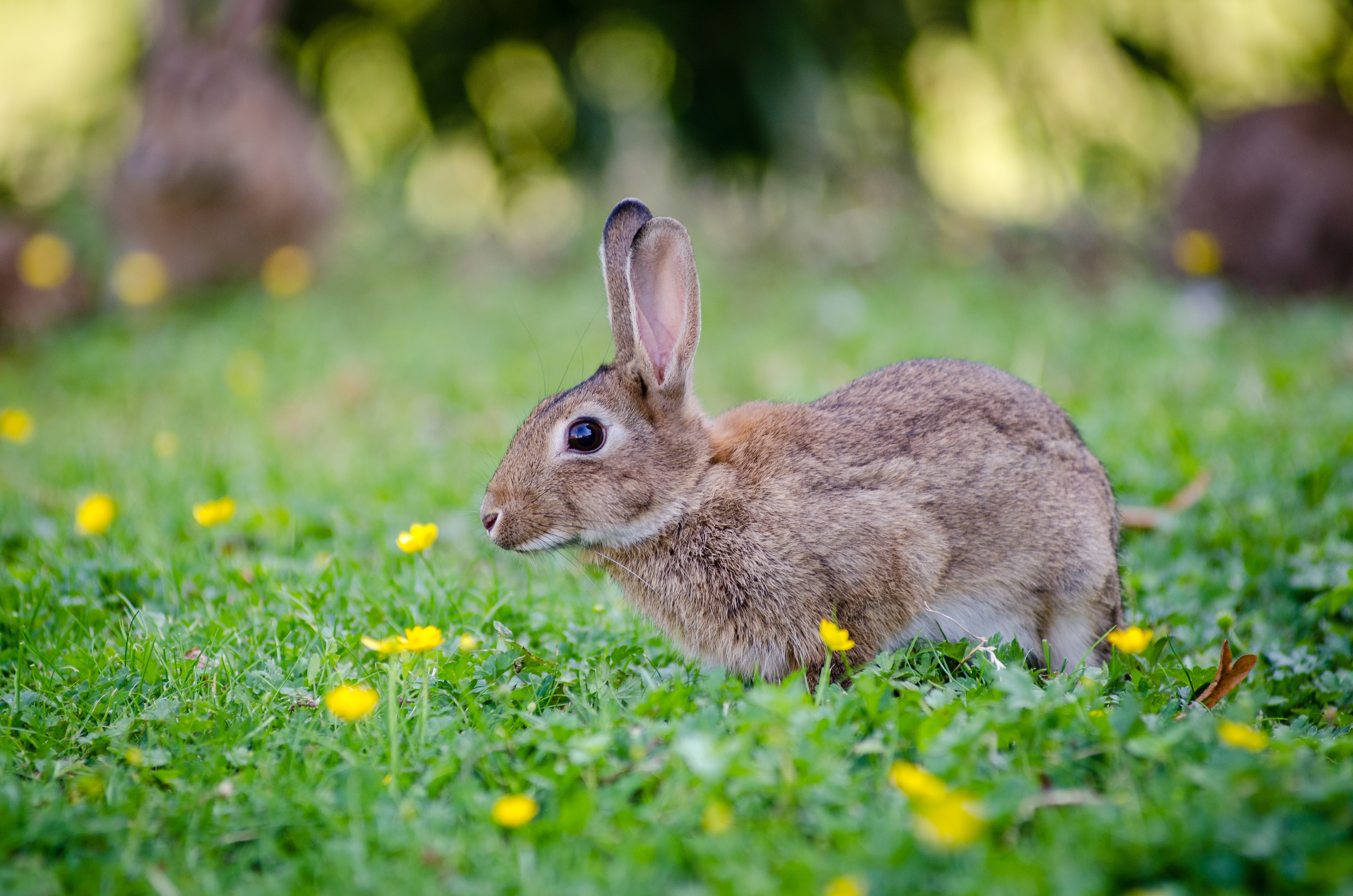
Photo of a wild rabbit. Notice the that the fur coat has a variety of colors speckled throughout so it is not a solid brown. Its coat is also short and sleek.
- Wild rabbits have long, narrow faces. Their eyes will be narrower, almost almond shaped.
- Wild rabbit’s eyes will never be blue or red.
- Wild rabbits are scared of people and will runaway if at all possible. If they are somehow caught, they will fight, kick, scream, even give themselves a heart attack trying to get away. Do not ever try and catch a wild rabbit. Training of wild rabbits has shown to not work, so you won’t have a “trained” wild rabbit coming up to you.
Photo Credit: Rabbit Rescue Inc.. This photo is a great example of when a domestic rabbit loots very similar to a wild rabbit. But, after reading the differences between domestic and wild rabbits above, you may be able to tell a little better now which is which.
The rabbit on the right is the wild rabbit. If you look at it’s face, you can see the skull in general is narrower and pointed, and the cheeks are skinnier. The ears are a little smaller, and the body is also narrower.
The domestic rabbit on the left. His name is London and he was rescued by Rabbit Rescue Inc. volunteers. While London’s coloring is similar to the wild rabbit’s, he has chubbier cheeks, and a rounder body overall. His ears are a little longer as well, and his eyes are rounder.
Who To Contact?
Whether you find a wild or domestic rabbit depends who you call.
If you find an injured wild rabbit or nest of baby rabbits and you’re not sure if mom is coming back for them, call your local Wildlife Rehabber or Rescue. They’ll be able to assist you with anything having to do with wild rabbits.
If you’ve found a domestic rabbit, call your local rabbit rescue, like House Rabbit Resource Network. If your area doesn’t have a rabbit rescue, contact your local animal shelter. If you need assistance trapping the rabbit, contact your local animal control and let them know its a domestic rabbit. Unfortunately, some rural areas won’t respond for rabbits, wild or domestic, so you may need to reach out to any local animal rescue for assistance.
If you live in the Austin, Texas area and have found a domestic rabbit, or are unsure whether you have a wild or domestic rabbit on your hands, please reach out to us via email or via messenger on our Facebook page. If you can include a photo of the rabbit and location that will be helpful if it is a domestic rabbit.
Can You Keep a Wild Rabbit?
While we know it’s tempting to keep the baby wild rabbit your dog dragged in, wild rabbits are to the bone, wild. Even wild baby bunnies will remain wild after captivity. No amount of human interaction is going to change that. Wild rabbits need to be rescued and rehabbed by a professional wildlife rehabber. Too many wild baby bunnies have died due to well-meaning people who knew absolutely nothing about what they needed.
Domestic rabbits have become domesticated over centuries. Many generations. Please do not try and force domestication on a wild rabbit. It is cruel to them even if your heart is in the right place.
Can You Release a Domestic Rabbit Out into the Wild?
As talked about above, domestic and wild rabbits split off into different species a long time ago. But that doesn’t stop people from thinking they’re one in the same animal. This leads to deadly consequences for both species.
Short and sweet: If you release a domestic rabbit into the wild, it will die either quickly, or slowly. Domestic rabbits are not equipped to survive in the wild. They don’t eat grass and foodstuffs that wild rabbits eat.
If you release a domestic rabbit out into the wild, they will spend their remaining days terrified and hungry. They will either perish from a larger prey animal, or they will starve to death. This is not the natural circle of life. Domestic rabbits are not supposed to be released into the wild. They’ve been selectively bred for centuries to depend on humans. So humans who release domestic rabbits into the wild are just abandoning their pets.
If you or someone you know needs to rehome a rabbit, please take a look at our rehoming/surrendering options page for more information.
Found and Want to Keep a Domestic Rabbit. Now What?
Many times, abandoned domestic rabbits will find their way to good humans who take them in and decide to keep them. As long as you’ve made some attempt to find the previous owner (check out our Lost and Found Rabbit page for how to do that), then keeping the domestic rabbit you found is fine.
But, taking care of a domestic rabbit isn’t that easy, and there’s a lot of wrong information on the internet. This is one big reason this website was created. To give people access to correct rabbit care all in one place! So, we have lots of pages and information about caring for your new rabbit. Here are a few pages we suggest you check out.
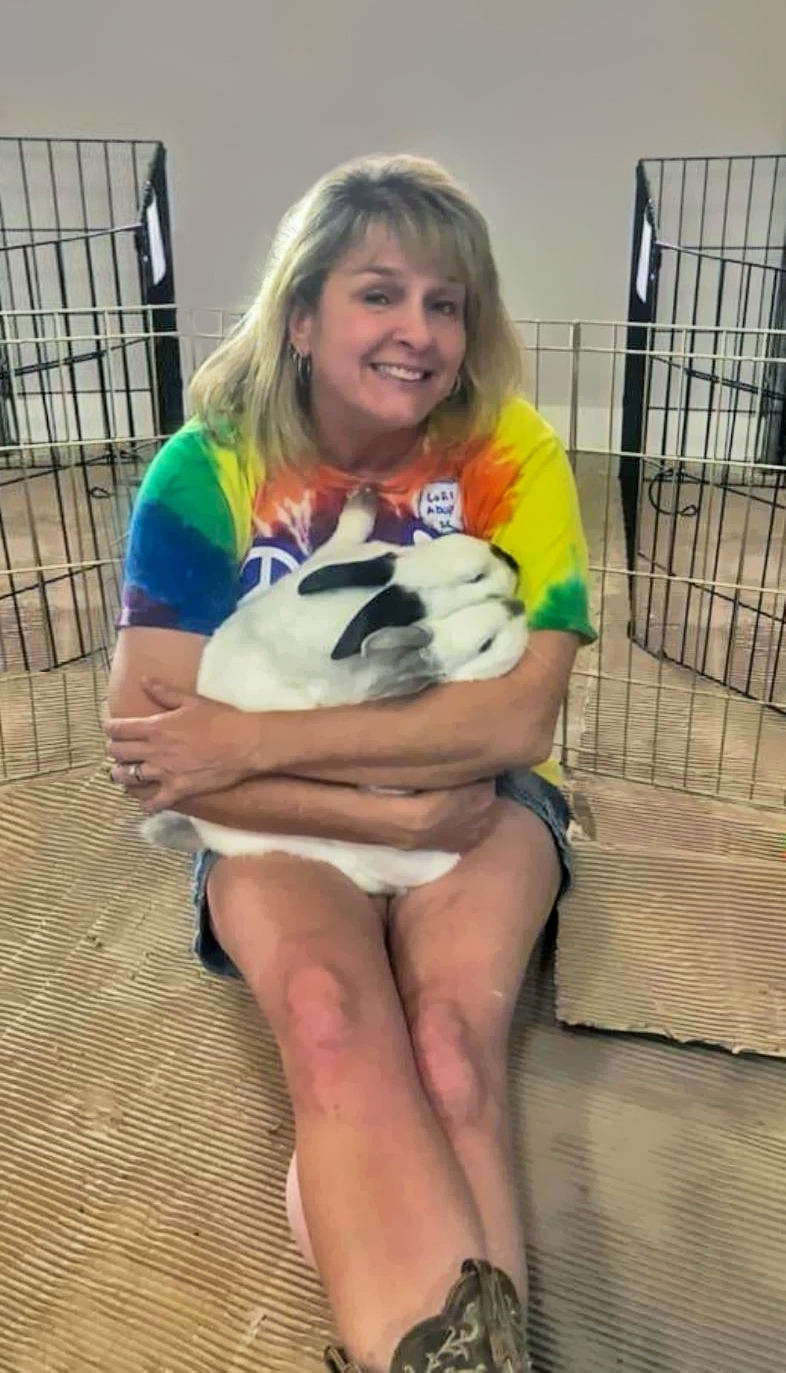
Photo of our Adoption Coordinator loving on two shelter bunnies.

